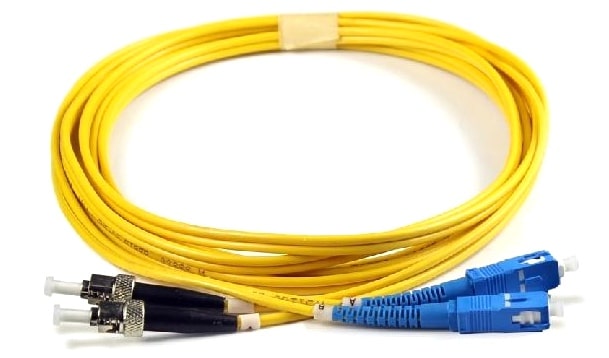
Many netizens asked me, in fact, they are the transmission mode of light in optical fiber, the main difference is the thickness of their core, they are now used in more optical fiber communication technology, the following to share with you the differences and their characteristics.
First, the relationship between single-mode fiber and multimode fiber
According to the transmission mode of light in the optical fiber, it can be divided into single mode fiber and multimode fiber.
1, Single-mode fiber
The single-mode fiber center glass core is very thin, generally 9 or 10 μm in diameter, and can only transmit one mode of light. Its inter-mode dispersion is small, suitable for remote communication, but there are also material dispersion and waveguide dispersion, which requires narrow spectral width and good stability. It was later discovered that 1.31 μm are exactly a low-loss window of the fiber. It is also the main working band of practical fiber-optic communication systems. The main parameters of the 1.31 μm conventional single-mode fiber are determined by the International Telecommunication Union ITU-T in the G652 recommendation, so this fiber is also called G652 fiber.
2, multimode fiber
The multi-mode fiber center glass core is thicker, generally 50 or 62.5 μm in diameter, and can transmit multiple modes of light. The dispersion between the modes is large, which limits the frequency at which digital signals are transmitted, and is more severe as the distance increases. Therefore, the distance of multimode fiber transmission is relatively close, generally only a few kilometers.
Second, the difference between single mode fiber and multimode fiber
- Multimode fiber is the most primitive technology for fiber-optic communication. Later, it found a better single-mode fiber communication, so single-mode fiber communication is an improvement of multimode fiber.
- The multi-mode light-emitting device is a light-emitting diode, and the light spectrum is wide, the light wave is not pure, the light transmission dispersion is large, and the transmission distance is small. 1000M bit/s bandwidth transmission with a reliable distance of 255 meters.
- The single-mode light-emitting device is a laser, and the light spectrum is narrow, the light wave is pure, the light transmission dispersion is small, and the transmission distance is long. The bandwidth is large, and it can usually transmit more than 100G bit/s. The actual use is generally divided into 155M bit/s, 1.25G bit/s, 2.5G bit/s, and 10G bit/s. Single-mode lasers are divided into three types: FP, DFB, and CWDM FP lasers typically transmit 60 kilometers, and DFB and CWDM lasers typically transmit 100 kilometers.
- The digital optical transceiver adopts video uncompressed transmission technology. The transmission information has a large amount of information data. The optical transceivers of more than 4 channels of video use the data stream of 1.25G bit/s or more, and the data stream of 8 channels of the video is up to 1.5G. Bit/s, the maximum bandwidth of multimode fiber is only 1G bit/s. If the multimode fiber is used, it may cause information loss, a large amount of snow and even white spots in video images, and data control failure. The transmission distance is also insufficient.
- Single-mode fiber-optic communication technology has basically replaced multi-mode fiber-optic communication technology. Multi-mode fiber-optic communication technology has rarely appeared in the market.